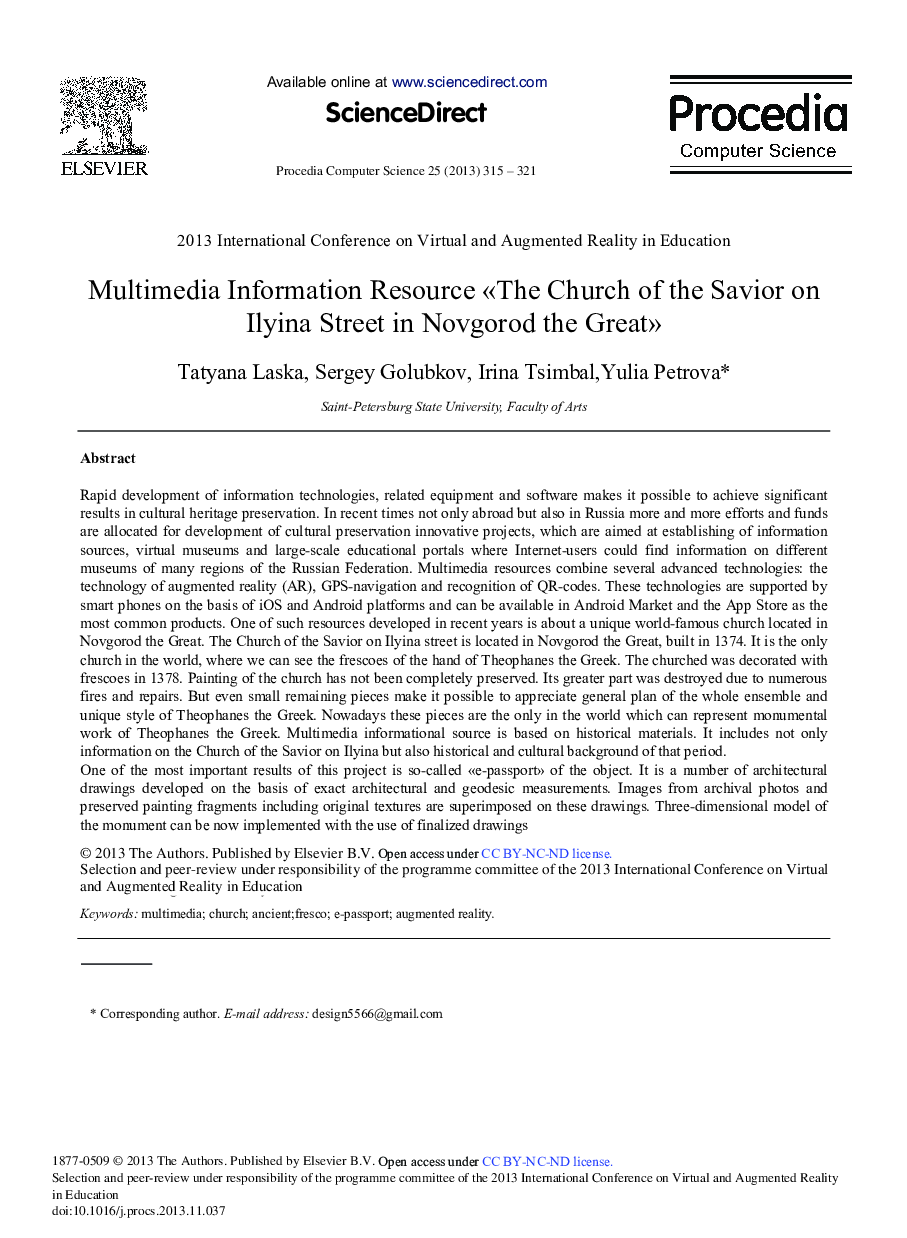| Article ID | Journal | Published Year | Pages | File Type |
|---|---|---|---|---|
| 490333 | Procedia Computer Science | 2013 | 7 Pages |
Rapid development of information technologies, related equipment and software makes it possible to achieve significant results in cultural heritage preservation. In recent times not only abroad but also in Russia more and more efforts and funds are allocated for development of cultural preservation innovative projects, which are aimed at establishing of information sources, virtual museums and large-scale educational portals where Internet-users could find information on different museums of many regions of the Russian Federation. Multimedia resources combine several advanced technologies: the technology of augmented reality (AR), GPS-navigation and recognition of QR-codes. These technologies are supported by smart phones on the basis of iOS and Android platforms and can be available in Android Market and the App Store as the most common products. One of such resources developed in recent years is about a unique world-famous church located in Novgorod the Great. The Church of the Savior on Ilyina street is located in Novgorod the Great, built in 1374. It is the only church in the world, where we can see the frescoes of the hand of Theophanes the Greek. The churched was decorated with frescoes in 1378. Painting of the church has not been completely preserved. Its greater part was destroyed due to numerous fires and repairs. But even small remaining pieces make it possible to appreciate general plan of the whole ensemble and unique style of Theophanes the Greek. Nowadays these pieces are the only in the world which can represent monumental work of Theophanes the Greek. Multimedia informational source is based on historical materials. It includes not only information on the Church of the Savior on Ilyina but also historical and cultural background of that period.One of the most important results of this project is so-called «e-passport» of the object. It is a number of architectural drawings developed on the basis of exact architectural and geodesic measurements. Images from archival photos and preserved painting fragments including original textures are superimposed on these drawings. Three-dimensional model of the monument can be now implemented with the use of finalized drawings
